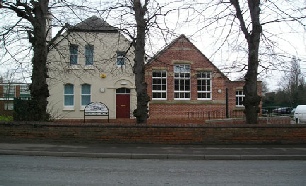





Welcome to
Barnby Dun
Community Association
The Old School,Top Road, Barnby Dun
Doncaster DN3 1DB

Barnby Dun History
The ancient parish boundary was based on the tithe and enclosure awards and as today is linked to Thorpe in Balne and South Bramwith.in 1871 the population was 484
It was an agricultural village with 4 Butchers, 3 Corn Millers, 2 Boat Owners, 1 Saddler, and 1 Coal Merchant, 4 Publicans, 4 Boot and Shoe Makers, I Farmer/Malster, 13 Farmers, 6 Shopkeepers, 3 Tailors, 3 Wheelwrights.
The canal was constructed here in 1732 for the benefit of industry and movement of farm produce between Hull ports, here, Doncaster and through to Sheffield. It was constructed here first because the river was not navigable at times due to being tidal and heavy silt deposits at times. Flood banks were also put in position to protect the village and later on secondary banks were built as the village is close to the flood plains.
The railways came to the village in 1845 and that brought industry to the area and we were changing slowly from agricultural being the only form of work. Sidings were introduced to handle all the freight from the area.
The Old School
There is no formal record of a school in Barnby Dun before 1827. Stainforth had a board school for 97 children. A poor master taught 20 children at Thorpe in Balne for tuppence per week each. Old Kirk Sandall had a free school but no record of a school here in Barnby Dun.
However a certain John Martin left in his will a £130 for education for six poor children to provide them with a pairs of shoes and books and £5 per year interest paid to the school master.
This could indicate the presence of a school. 1805 George 3rd was to say ‘ It is my wish that every poor child in my dominions, should be taught to read the bible’
Although a map of 1805 shows no school. A free school in 1854 was mentioned in Borthwick Institute of Historical Research and we believe that this was found to the rear of the Wesleyan Chapel on Station Road.
In 1864 there stated a day school for boys and girls, a master and 50 children attending.
"The Old School” as we know it was built in 1871 at a cost of a £185 from money raised and donated from the parishioners by Reverend John Duffin. The first master was called Charles Newbound, also the Parish clerk.
In 1904 it was stressed that the school was too small.
In 1994 after a wonderful life the school was closed and allowed to go derelict until a team of volunteers with aid of various grants managed to save the old school and in July 2005 it was re-opened as a self financing community project .
George Frederick Milnthorp a large landowner/farmer changed the brought prosperity to the village when in 1860 built his first malt kiln. This was malt dried turned and when ready added to beer etc. By 1907 he had built all three here in the village. This meant that the farm labourers could work all year,in the fields and then in the kilns in winter. in 1920 he sold land to Pilkington’s so that they could build the village of Kirk Sandall our parish neighbours.
In 1943 his nephew continued with the business after George’s death until selling out to Tetley Brewery in 1964. The business still thrived until its closure in 1964.
In 1905 Bentley pit was sunk.
In 1911 Stainforth pit was sunk.
In 1920 Pilkington’s glassworks and new dikes and drains were being dug at the turn of the century.
People flooded in to this area claiming the right to work. It was a boom time for Barnby Dun and the near area. Small light industry appeared and complimented each other with more avenues of employment.
In 1958 the river was re-routed to take the twists and bends out of it.
In 1959 Thorpe Marsh Power Station was commissioned to be built, and became operational in 1963 bringing yet more employment to Barnby Dun. This has since closed down after 25 years of production.
Housing of 1921 and 1940 were the two boom times for new properties to be built for the industrial workers and later the post war boom. Private and council properties were being built at these times.
In 1951 the population was 1250
In 1977 the population was 2300
In 1991 the population was 3396
In 2003 the population is in excess of 4000
Webmaster 141daveatkinson@gmail.com
| Barnby Dun History |
| Emergency Action Plan (EAP) |
| Application Form |